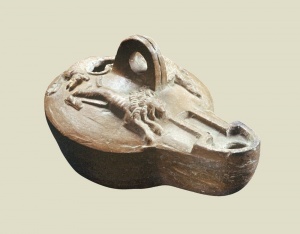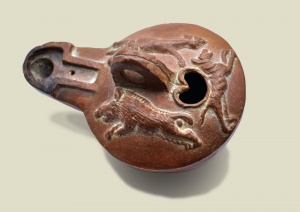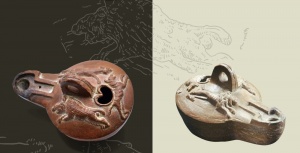Sacred fire and the soul of the dead
Oil lamp from Brezje with the image of a lion, a dog and a boar
A ceramic oil lamp with a relief depiction of a lion, a wild boar and a dog was unearthed near the village of Brezje in the Gorenjska region during the construction of a house. It was found in a destroyed Roman-era grave that lay close to a prehistoric tumulus grave.
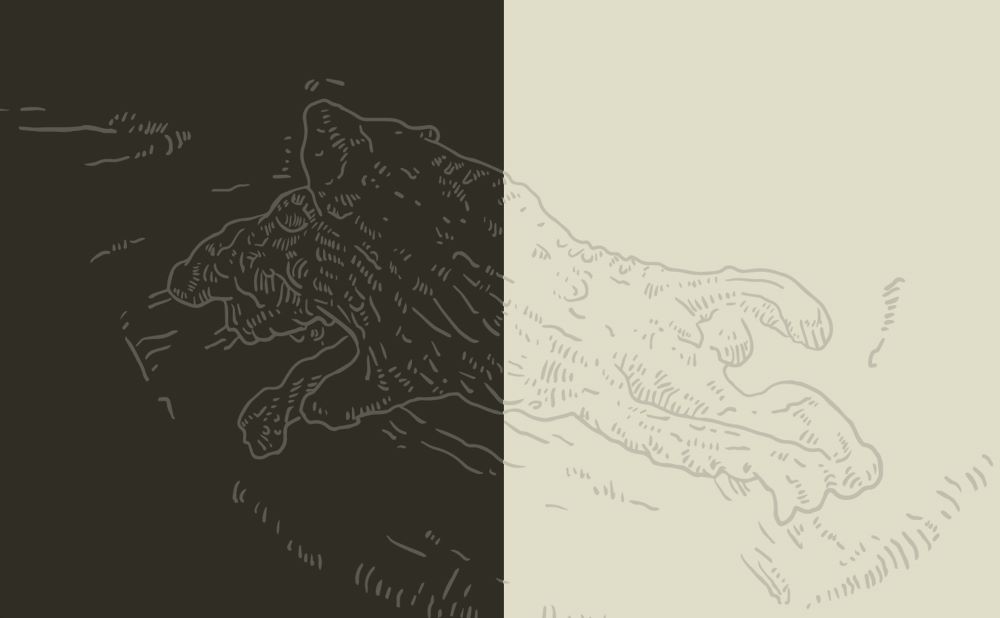
Interpretive image based on the original.
Author: Gorazd Koščak
In 2006 the remains of a Roman road station with a large villa rustica were found in Mošnje near Brezje. We can assume that the members of the settler family, almost certainly of Italic origin, were not buried in the burial site of the former prehistoric community near Brezje. Did the grave with the oil lamp, which lay in the direct vicinity of the prehistoric graves, therefore belong to an indigenous inhabitant of the area?
The ceramic oil lamp with relief decoration showing a lion, a wild boar and a dog was made in a mould. The coarse features on its surface indicate that it was made by a local potter, although the decoration featuring a lion, a wild boar and a dog reveals a connection to the Greco-Roman belief system. The boar represents brute physical strength, a mortal quality. A lion accompanied by a boar symbolizes the victory of spiritual forces and the transcendence of the immortal soul. The dog, the loyal companion of souls, follows its master into the next world.
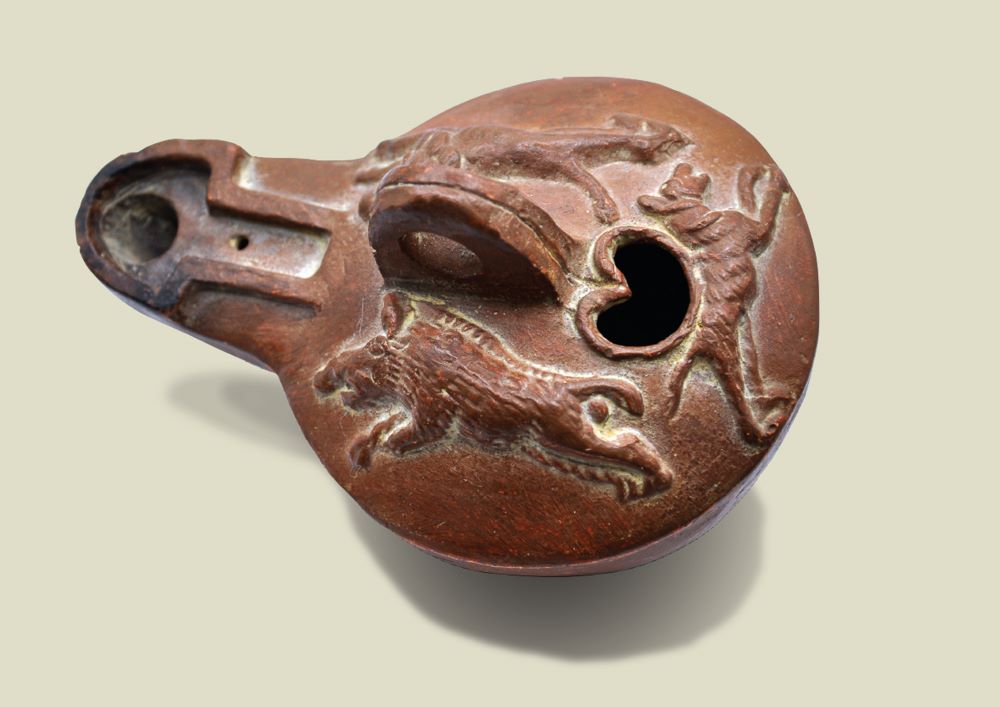
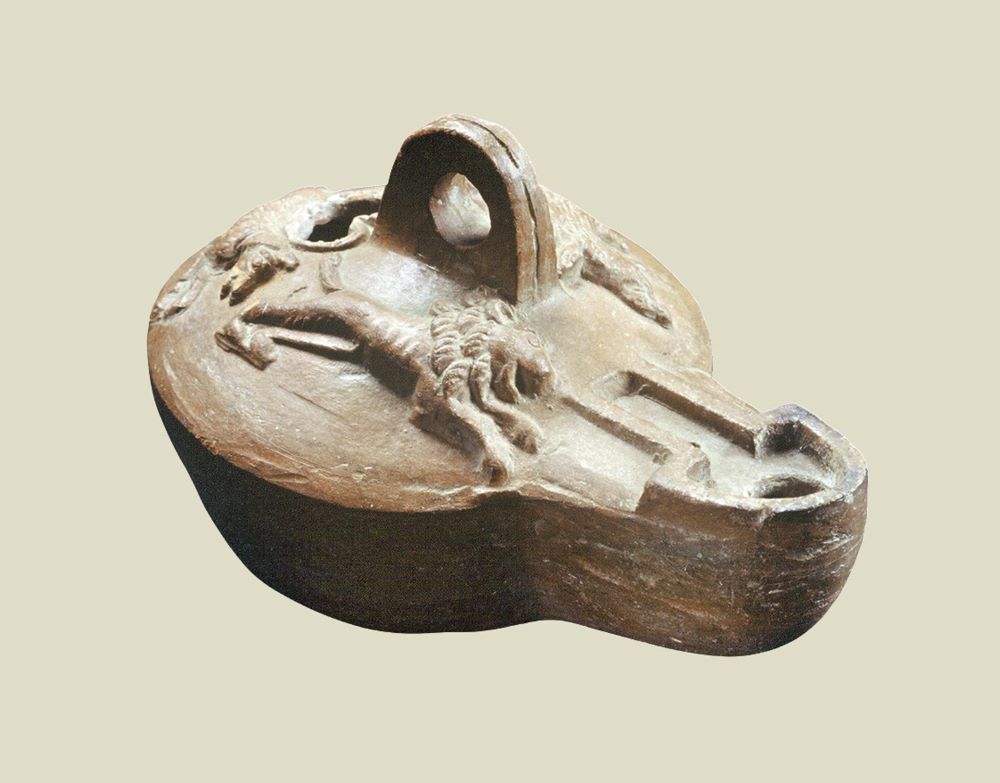
Oil lamp from Brezje.
Photo: Marko Kot and Tomaž Lauko
The myth of Hermes confirms our assumption: Zeus commanded that his son Hermes should be “lord over all birds of omen and grim-eyed lions, and boars with gleaming tusks, and over dogs and all flocks.” He chose him as the only messenger to Hades, god of the underworld, and appointed him to lead souls into the underworld. A description we find in the Homeric Hymns reveals that the oil lamp was made for funerary purposes and that its owner was familiar with the depicted mythological content. It is unlikely that the indigenous population possessed literary knowledge of Greek myth. We may therefore conclude that the object was created as a unique copy of a bronze original, which the local perhaps knew from the nearby villa in Mošnje.
Verena Perko
Gorenjski muzej Kranj
Image Gallery and Catalogue of Museum Objects
